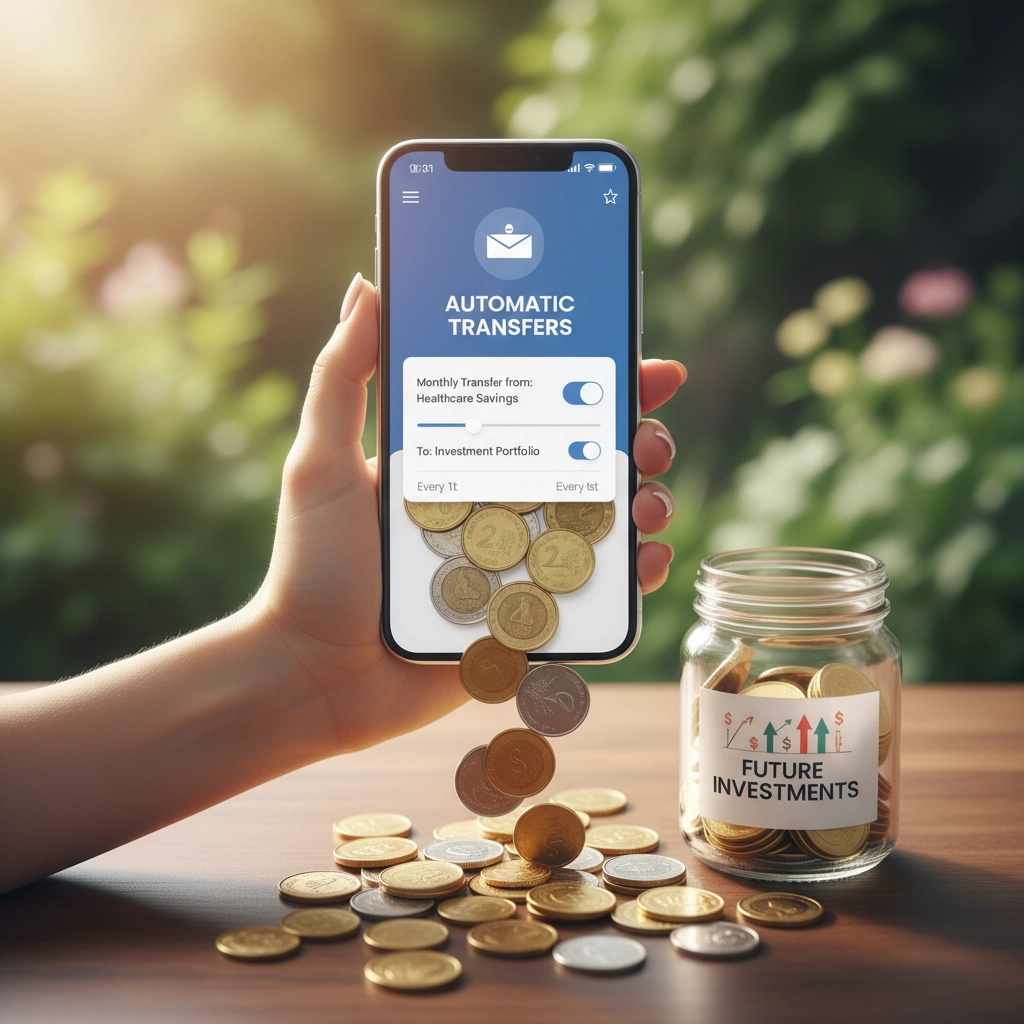The Simple Trick to Turn Weight-Loss Drug Costs Into Wealth-Building Opportunities
- Travis Moore
- Oct 17
- 5 min read
The average American spends over $12,000 annually on healthcare costs, with weight-loss drugs like Ozempic and Wegovy adding $1,000-$1,500 monthly to that burden. Instead of viewing these wellness spending patterns as pure expenses, you can reframe weight-loss drug costs as strategic investments that generate measurable returns across multiple areas of your financial life.
Reframing Healthcare Costs as Investment Capital
Weight-loss drugs represent a unique category of healthcare spending because they deliver quantifiable results that translate directly into reduced future medical expenses. By calculating the long-term financial benefits of sustained weight loss, you can justify the upfront costs and create a framework for redirecting those savings into wealth-building opportunities.
The key lies in tracking every dollar you save from improved health outcomes and automatically channeling those savings into investment accounts. This approach transforms temporary healthcare costs into permanent wealth accumulation.

Calculate Your Health ROI to Justify the Investment
Begin by documenting your current health-related expenses beyond the weight-loss medication itself. Track spending on diabetes management, blood pressure medications, sleep apnea equipment, joint pain treatments, and frequent doctor visits. Most individuals carrying excess weight spend an additional $1,400-$2,800 annually on obesity-related medical costs.
Create a simple spreadsheet to monitor these baseline expenses over three months before starting weight-loss drugs. This baseline becomes your benchmark for measuring savings as your health improves. For every pound lost, medical studies indicate an average reduction of $69 in annual healthcare costs.
Weight-loss drugs typically help users lose 15-20% of their body weight within the first year. A 200-pound individual losing 35 pounds could potentially save $2,400 annually in reduced medical expenses. These savings compound over time, creating a substantial pool of capital for wealth-building activities.
Optimize Insurance Coverage and Payment Strategies
Maximizing insurance benefits while minimizing out-of-pocket costs requires strategic planning around your healthcare spending approach. Contact your insurance provider to understand exact coverage percentages for weight-loss medications under different scenarios, including medical necessity documentation requirements.
Many insurers cover weight-loss drugs when prescribed for diabetes management or other qualifying conditions. Work with your healthcare provider to document all obesity-related health issues that could justify coverage under medical necessity provisions.
Consider switching to a Health Savings Account (HSA) compatible insurance plan if you don't currently have one. HSA contributions are tax-deductible, grow tax-free, and can be withdrawn tax-free for qualified medical expenses. This triple tax advantage makes HSAs one of the most powerful wealth-building tools available.
Contribute the maximum annual HSA limit ($4,150 for individuals, $8,300 for families in 2025) and use these funds to pay for weight-loss medications. The money you would have spent from your regular checking account can be redirected into investment accounts instead.

Redirect Eliminated Expenses Into Investment Accounts
As your health improves and weight-loss medications reduce your need for other medical interventions, immediately redirect those eliminated expenses into investment accounts. This prevents lifestyle inflation from absorbing your newfound savings.
Set up automatic transfers from your checking account to investment accounts for the exact amount you previously spent on eliminated medications, treatments, or medical equipment. If you previously spent $200 monthly on diabetes medications and supplies, automatically transfer $200 monthly to a low-cost index fund.
The psychological benefit of this approach is significant. Instead of feeling like you're making a sacrifice to invest, you're simply maintaining your existing spending patterns while redirecting money from less beneficial expenses to wealth-building activities.
Capture Indirect Financial Benefits
Weight-loss drugs create numerous indirect financial benefits that extend far beyond direct healthcare savings. Improved energy levels often translate into increased earning potential through better job performance, additional work capacity, or career advancement opportunities.
Track improvements in your sleep quality, energy levels, and overall productivity. Many individuals report being able to work additional hours, take on freelance projects, or pursue career advancement opportunities they previously lacked the energy to pursue. Quantify these earning increases and direct 100% of additional income into investment accounts.
Reduced sick days represent another measurable financial benefit. Calculate your daily earning rate and multiply by the number of sick days you avoid annually due to improved health. Add this amount to your monthly investment contributions.

Create a Long-Term Wealth-Building Timeline
Develop a 10-year financial projection that accounts for both the temporary costs of weight-loss medications and the permanent wealth accumulation from redirected healthcare savings. Most individuals use weight-loss drugs for 12-24 months before transitioning to maintenance approaches that cost significantly less.
During the medication phase, focus on maximizing insurance coverage and using HSA funds to minimize immediate cash flow impact. Simultaneously, begin redirecting eliminated healthcare expenses into investment accounts to establish the habit and start building your investment base.
After discontinuing weight-loss medications, continue the established investment pattern while adding the medication costs to your monthly investment contributions. A person spending $1,200 monthly on weight-loss drugs who maintains their new weight naturally could redirect that entire amount into investments after completing their medication regimen.
Optimize Investment Vehicle Selection
Choose investment vehicles that align with your timeline and risk tolerance while maximizing the compound growth potential of your redirected healthcare savings. For money saved from eliminated healthcare expenses, consider aggressive growth investments since you're essentially investing money you never expected to have available.
Low-cost index funds tracking broad market indices like the S&P 500 provide excellent long-term growth potential with minimal maintenance requirements. Target-date funds automatically adjust risk levels as you approach retirement, making them ideal for hands-off investors.
Consider dollar-cost averaging your healthcare savings investments by making consistent monthly contributions regardless of market conditions. This approach reduces the impact of market volatility while building wealth systematically over time.
For individuals comfortable with slightly higher risk, small-cap growth funds or technology-focused ETFs may provide enhanced returns over 10+ year investment horizons. The key is maintaining consistency in your investment contributions regardless of which vehicles you select.
Track Progress and Adjust Strategy
Monitor both your health improvements and wealth accumulation progress using simple tracking tools. Create monthly check-ins to review eliminated healthcare expenses, investment contributions, and overall financial progress toward your wealth-building goals.
Adjust your strategy based on actual results rather than projections. If your health improvements exceed expectations, you may be able to redirect even more money into investments. If medication costs remain higher than anticipated, focus on optimizing insurance coverage or exploring generic alternatives.
The ultimate goal is creating a sustainable system where improved health generates measurable wealth accumulation. By treating weight-loss drug costs as temporary investments that create permanent financial benefits, you transform healthcare spending into a powerful wealth-building strategy.
This approach requires discipline and systematic execution, but the results compound significantly over time. Individuals who successfully implement this strategy often find themselves in substantially better financial positions within 5-7 years, with improved health as an additional bonus rather than the primary benefit.
The simple trick is recognizing that every healthcare dollar you spend wisely today creates multiple dollars of value tomorrow through improved health, reduced future medical expenses, and systematic wealth accumulation. Weight-loss drugs represent one of the clearest examples of this principle in action.
Comments